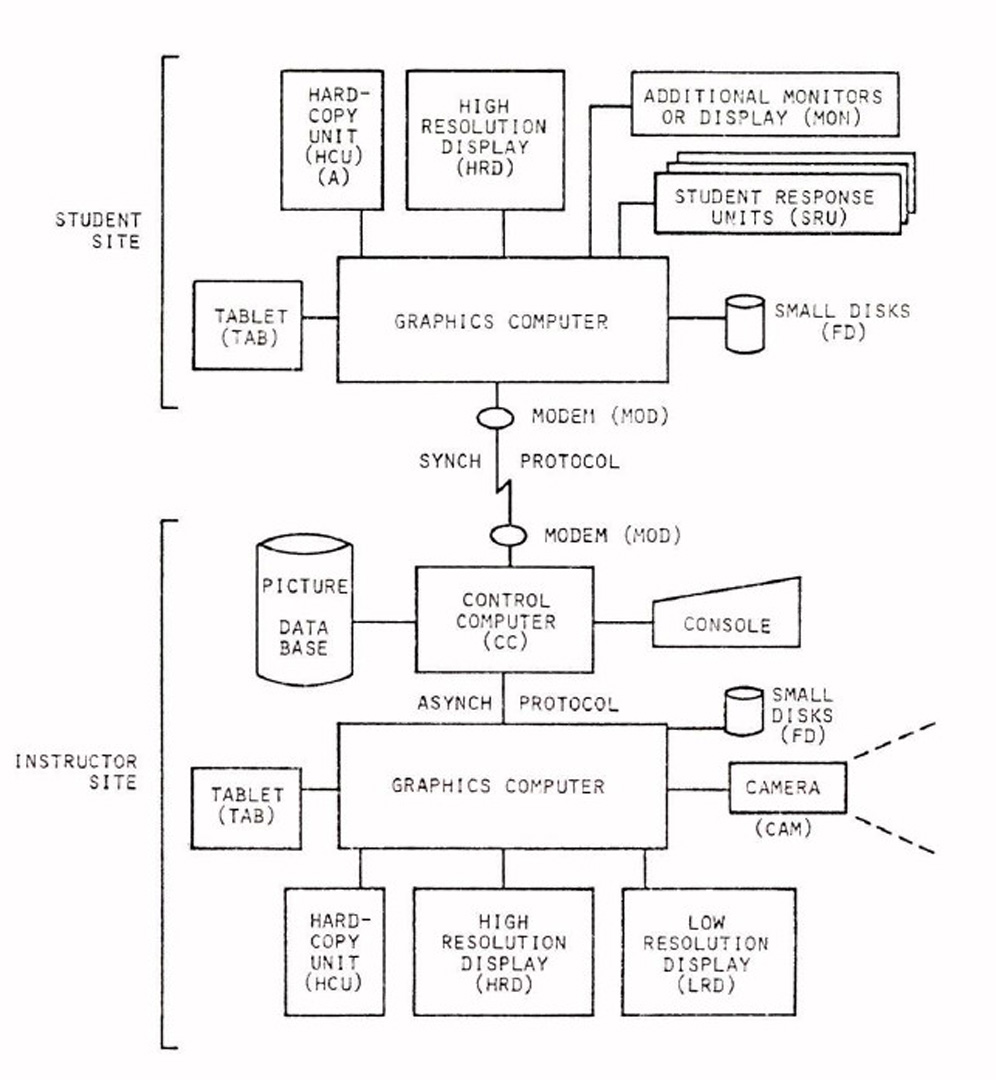“Color graphics for remote teaching” by Hankley and Wallentine
Conference:
Type(s):
Title:
- Color graphics for remote teaching
Presenter(s)/Author(s):
Abstract:
A system for preparation and manipulation of color graphics video frames is described. The system commands are designed for use by a class instructor (who is not a computer science person) in preparation and delivery of lectures to a remote site. The system can provide the types of images, overlays, and coloring that could be drawn using transparency sheets and color pens, or that could prepared as 35 mm technical slides (not photographs, but text and diagrams). The hardware consists of standardly available input, display, and output components. Several hardware alternatives are noted so that cost and capability tradeoffs can be compared. Communication between the instructor’s site and the remote class site uses standard telephone lines for transmission of participants’ voices and for digital graphics commands and compressed image data. The system software is yet in experimental form. It is in BASIC, but in modular form. While none of the individual components or graphics concepts in this system is in itself dramatically new, the integrated system demonstrates an important advancement in state-of-the-art for remote instruction.
References:
1. Association for Media-based Continuing Education for Engineers, Inc., Georgia Institute of Technology, Atlanta, GA.
2. Pettie, J. and Grace, D., “The Stanford Instructional Television Network,” IEEE Spectrum, Vol. 7, May 1970, pp. 73-80.
3. Southworth, G., “Slow Scan TV Teleconferencing,” (1978), and “Slow Scan TV Business Communications,” (1979), Colorado Vidėo, Inc., Boulder, CO.
4. Pinches and Liddell, “The Production of Programme Material for the Cyclops System,” Proc. Conf. on Microprocessors in Automation and Communications, IEEE, No. 40, Sept. 1978.
5. Advent Corporation, 195 Albany St., Cambridge, MA, FTC Services, Inc., 25 Broad St., New York, NY.
6. Baer, W., “Telecommunications Technology in the 1980’s,” Chap. 2, G. Robinson (Ed.), Communications for Tomorrow: Policy Perspectives for the 1980’s, Praeger, NY, 1978.
7. Cheng, R., “On-Line Large Screen Display System for Computer Instruction,” ACM SIGCSE, Vol. 8, #1, Feb. 1976, pp. 179-181.
8. Hiltz, S. R. and Turoff, M., “The Network Nation,” Addison-Wesley Publishing Company, Inc., Reading, MA, 1978.
9. Hough, R. and Panko, R., “Teleconferencing Systems: A State-of-the-Art Survey and Preliminary Analysis,” NTIS report number PB-268 455, 1977.
10. Johansen, R.; Vallee, J.; and Spangler, K., “Electronic Meetings,” Addison-Wesley Publishing Company, Inc., Reading, MA, 1979.
11. Kumar, V. and Rogers, J., “Instructional Uses of the Olin Experimental Classroom,” ACM SIGCSE, Vol. 8, #1, Feb. 1976, pp. 189-191.
12. Levine, D., “Computer-Controlled Display Demonstrations of Dynamic Concepts in Computer Science,” ACM SIGCSE, Vol. 8, #1, Feb. 1976, pp. 192-199.
13. Martin-Vegue, C., “Technical and Economic Factors in University Instructional Television Systems,” Proc. IEEE, Vol. 59, #6, June 1971, pp. 946-953.
14. Wallentine, V. and Hankley, W., “A Computer Based Remote Education Delivery System,” Technical Report, Department of Computer Science, Kansas State University, 1979.




